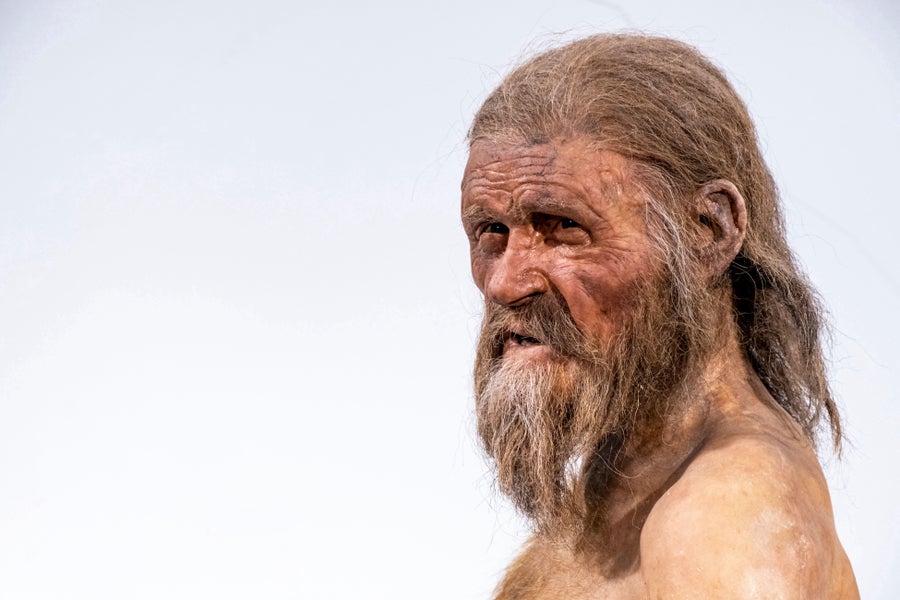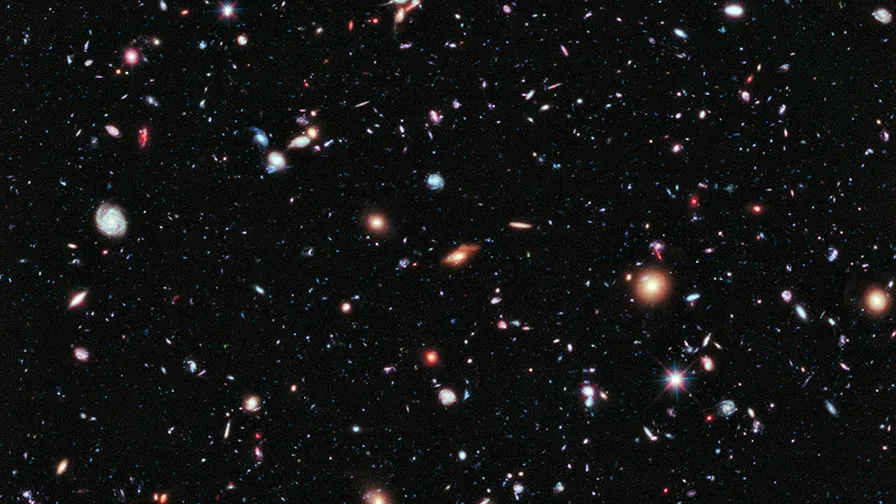Science is often portrayed as a noble quest for truth, progress, and enlightenment. And indeed, it is. But sometimes, the truths science uncovers are unsettling, eerie, and even downright terrifying. From bizarre phenomena in nature to disturbing medical practices of the past, the history of scientific discovery is filled with moments that make us shiver. These discoveries are not merely “spooky stories”—they are real findings that reveal just how strange, unpredictable, and sometimes disturbing our universe can be.
What follows are eleven of the creepiest discoveries in science history. They remind us that science is not always comforting—it is often unsettling, forcing us to confront the darker sides of nature, humanity, and reality itself.
1. The Immortal Cells of Henrietta Lacks
In 1951, Henrietta Lacks, an African American woman, died of cervical cancer at Johns Hopkins Hospital. Unbeknownst to her or her family, doctors had taken samples of her cancer cells. These cells, later known as HeLa cells, displayed something extraordinary—and disturbing. Unlike normal human cells, which die after a limited number of divisions, Henrietta’s cells seemed immortal. They divided indefinitely in the lab, outliving her by decades.
HeLa cells have since been used in countless experiments, leading to medical breakthroughs from the polio vaccine to cancer treatments. But the story carries a chilling ethical shadow: Henrietta never gave consent, and her family was kept in the dark for years. The idea that a part of her continues to live—and even “haunt” laboratories around the world—raises unsettling questions about autonomy, exploitation, and the eerie persistence of life beyond death.
2. The Strange Case of the Dancing Plague
Imagine a town where people suddenly cannot stop dancing—not joyfully, but compulsively, until they collapse from exhaustion or even death. This is exactly what happened in 1518 in Strasbourg, when dozens of residents were struck by a bizarre “dancing plague.”
Eyewitnesses reported people dancing uncontrollably for days, their bodies writhing as if possessed. Some historians believe it was mass hysteria or stress-induced psychosis; others suggest ergot poisoning from moldy rye bread, which can cause hallucinations and spasms.
Whatever the cause, the event feels like something from a horror film: a whole community trapped in a grotesque, unstoppable dance of death, as music played on the streets in a desperate attempt to cure the sufferers.
3. The Parasites That Control Minds
Among the creepiest scientific discoveries is the realization that parasites can control the behavior of their hosts. One of the most infamous examples is Toxoplasma gondii, a parasite that infects rats and mice. Instead of fearing cats—their natural predators—infected rodents become strangely attracted to them, increasing their chances of being eaten. The parasite then completes its life cycle in the cat’s body.
Even creepier: humans can also be infected by Toxoplasma. While most cases are harmless, studies suggest subtle changes in behavior, personality, and even risk-taking tendencies. Some researchers have controversially linked Toxoplasma to mental health disorders.
The thought that tiny parasites may influence our thoughts and actions blurs the line between free will and biological manipulation—a deeply unsettling discovery.
4. The Face in the Ice: Frozen Bodies Preserved for Centuries
The discovery of perfectly preserved bodies in ice and permafrost has fascinated and disturbed scientists alike. Perhaps the most famous is Ötzi the Iceman, a 5,300-year-old mummy found in the Alps in 1991. His body was so well-preserved that researchers could examine his tattoos, last meal, and even the arrow wound that killed him.
More disturbing are the cases of frozen victims of disasters, such as the Franklin Expedition, whose crew became trapped in Arctic ice in the 1840s. When bodies were exhumed more than a century later, their skin, hair, and expressions were hauntingly intact, their eyes staring eerily from a frozen past.
These discoveries remind us that nature can preserve death in chilling detail, turning the human body into an eternal relic of tragedy.
5. The Creepy Reality of the Uncanny Valley
Robotics and computer science have revealed a strange psychological phenomenon known as the uncanny valley. When human-like robots or computer-generated faces look almost—but not quite—real, people experience intense discomfort or fear.
Why does this happen? One theory suggests it is an evolutionary response: our brains are wired to detect subtle “wrongness” in faces and movements, perhaps as a survival mechanism to avoid corpses or disease.
Whatever the reason, the uncanny valley makes interactions with humanoid robots deeply unsettling. As technology advances, our discomfort grows: the closer machines come to imitating us, the more they remind us of distorted reflections of ourselves—something alive, but not quite human.
6. Mad Science: The History of Lobotomies
In the early 20th century, lobotomies were hailed as a groundbreaking treatment for mental illness. The procedure involved severing connections in the brain’s prefrontal cortex, often by inserting a sharp instrument through the eye socket. Thousands of patients underwent the operation, many without proper consent.
The results were horrifying. Some patients became docile “shells” of themselves; others suffered severe disabilities or died. Yet lobotomies were once so accepted that Dr. Walter Freeman, a leading proponent, performed them in public demonstrations—sometimes in under ten minutes.
Today, lobotomies are viewed as one of the darkest chapters in medical history, a grim reminder of how desperation and hubris can lead to horrific practices in the name of science.
7. The Creepiest Organism: The Zombie Fungus
In the rainforests, a sinister fungus lurks with a horrifying ability: it turns insects into zombies. The Ophiocordyceps fungus infects ants, growing inside their bodies and taking control of their behavior. The infected ant is compelled to climb vegetation and clamp onto a leaf. Then, the fungus erupts from its body, releasing spores to infect more ants.
This real-life “zombie apocalypse” plays out silently in nature, a reminder that parasitism can be grotesquely ingenious. Scientists studying the fungus have marveled—and shuddered—at its precision. It doesn’t just kill; it puppeteers.
The discovery unsettles us because it suggests that free will is fragile, and that even the smallest creatures can be hijacked by unseen forces.
8. Cannibal Medicine: When Humans Consumed Humans
In early modern Europe, a disturbing medical practice was surprisingly common: the use of human remains as medicine. Ground-up mummies from Egypt were sold as cures for ailments. Human fat, blood, and bone were used in remedies thought to treat everything from headaches to epilepsy.
Royalty and commoners alike ingested these macabre concoctions, believing they held mystical healing powers. Even King Charles II of England reportedly drank a potion made from powdered human skull.
The realization that respected physicians once prescribed cannibalism is a chilling reminder of how far science and medicine have evolved—and how dark their history can be.
9. The Cosmic Horror of Vacuum Decay
On the largest scale, physics has revealed a terrifying possibility: the universe itself may not be stable. According to quantum field theory, our universe exists in a “false vacuum”—a temporary, unstable state. At any moment, a bubble of “true vacuum” could form, expanding at the speed of light and annihilating everything in existence.
This process, known as vacuum decay, would be instant, unstoppable, and undetectable until it happens. One moment, we exist. The next, nothing.
Though the probability is extremely low within the universe’s current lifespan, the very idea that all of reality could vanish without warning is one of the creepiest scientific possibilities ever conceived.
10. The Eerie Messages of the Voynich Manuscript
The Voynich Manuscript is one of the strangest and most mysterious discoveries in the history of science and linguistics. Found in the early 20th century, the manuscript is filled with bizarre illustrations of unknown plants, astronomical diagrams, and a script that no one has been able to decipher.
Despite the efforts of cryptographers, linguists, and computer scientists, its language remains a mystery. Some believe it is a hoax, while others think it encodes forgotten knowledge—or perhaps knowledge from beyond human understanding.
The manuscript’s strange beauty and undecipherable content give it an aura of creepiness, as though it is a message meant for minds not our own.
11. The Ghost Particles of the Universe
Neutrinos are among the strangest particles in the universe. They are called “ghost particles” because they almost never interact with matter. Trillions of them pass through your body every second, yet you do not feel them and cannot detect them without highly specialized equipment.
They are everywhere, yet almost completely invisible. Scientists have detected neutrinos coming from nuclear reactions in the sun and even from distant supernovae. But their true nature—why they have such tiny masses, and whether they hold secrets about the origins of the universe—remains a mystery.
The realization that countless invisible particles are streaming through us at all times is both awe-inspiring and unsettling, as if we are forever haunted by the universe’s invisible whispers.
Conclusion
The history of science is not only filled with brilliance and progress—it is also haunted by unsettling discoveries that challenge our comfort with reality. From immortal human cells to parasites that control minds, from cannibal medicine to the possibility of cosmic annihilation, these discoveries remind us that science often reveals truths far stranger—and creepier—than fiction.
And yet, it is this very eeriness that makes science so captivating. To confront the unsettling is to expand our understanding. The creepiness of these discoveries is not a reason to turn away, but a reason to keep looking—because behind the unsettling truths lie deeper insights into who we are, where we came from, and the strange, mysterious universe we call home.






